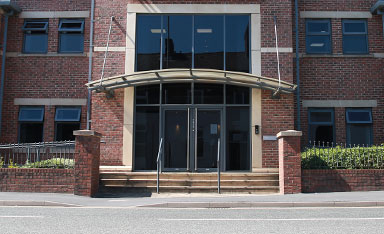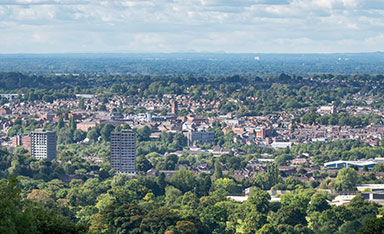The challenges – are there LGBTQ+ care homes?
It can be daunting to move into full residential care at any stage of life and from any walk of life. In some cases, it can particularly be so for members of the LGBTQ+ community.
Today’s baby boomers are approaching 80 years of age, and many are now requiring extra care and support in life. They are also increasingly requiring residential care. This is a generation for whom homosexuality was illegal in their youth, and wider society far less tolerant to the LGBTQ+ community than it is now. The desire to integrate into a traditional care home – and fear of discrimination – can add pressure to this generation to keep their sexual identity private, leaving residents unable to fully express themselves or to feel confident being themselves. This can be an uncomfortable situation, which could then become intolerable if the resident develops dementia and fears discrimination if they are unintentionally exposed.
One solution to this situation would be the provision of LGBTQ+-only care homes, but so far this has not happened in the UK. It could be argued that LGBTQ+ orientation as a condition of entry would be discriminatory, but that has not stopped Manchester City Council from approving an LGBTQ+ targeted extra-care housing development in 2020, which is still in early stages. According to research by the LGBT Foundation, 74% of people identifying as LGBTQ+ would prefer a care home provided specifically for their community.
Current legal provision
Until more provision is available, what can LGBTQ+ pensioners do to ensure that their needs are catered for?
A starting point would be to ask prospective care homes for their inclusivity and diversity policy. Not all care homes will have one. If they do, check whether it caters well to LGBTQ+ needs and addresses any concerns. It would be advisable to find out how well the policy is implemented at the home; speak to staff and residents to find out whether there have been incidents of harassment or bullying and, if so, how they were dealt with. If there haven’t been any incidents, how would such an incident be handled? Ask the home if it has a regular training programme for staff; is there a good working knowledge of the policy and its implementation among carers? Try to get a sense of how robust this is.
Does the home have a Pride in Care quality standard? This is an accreditation awarded to homes by Opening Doors London (which works with care homes nationwide) which evidences that the home is as inclusive as possible to the LGBTQ+ community. It must be renewed every 3 years. Look for the Pride in Care logo containing a rainbow overlaid with a tick. Many homes with the accreditation will display it on their website. Opening Doors London can provide a list of accredited homes.
Ask care homes how they celebrate diversity; do they hold any specific LGBTQ+ pride events for example, or support residents to attend the nearest Pride parade? Are there any regular activities on offer at the home, for example targeted music and reminiscence evenings? Such activities may not be of interest to everyone, but their existence points towards a supportive community where the care resident will feel welcome and included. Finally, does the home have a dedicated LGBTQ+ representative or mentor that residents could approach comfortably with any concerns?
There may not be any LGBTQ+ care homes yet, but there are plenty of homes nationwide which welcome, support and celebrate the LGBTQ+ community. In future, as certain homes continue to improve their offer of targeted support, there could be a wide choice of LGBTQ+ specialist homes.
For more information, please contact Genevieve Powrie on 01625 442146 or genevieve.powrie@sasdaniels.co.uk
The challenges – are there LGBTQ+ care homes?
It can be daunting to move into full residential care at any stage of life and from any walk of life. In some cases, it can particularly be so for members of the LGBTQ+ community.
Today’s baby boomers are approaching 80 years of age, and many are now requiring extra care and support in life. They are also increasingly requiring residential care. This is a generation for whom homosexuality was illegal in their youth, and wider society far less tolerant to the LGBTQ+ community than it is now. The desire to integrate into a traditional care home – and fear of discrimination – can add pressure to this generation to keep their sexual identity private, leaving residents unable to fully express themselves or to feel confident being themselves. This can be an uncomfortable situation, which could then become intolerable if the resident develops dementia and fears discrimination if they are unintentionally exposed.
One solution to this situation would be the provision of LGBTQ+-only care homes, but so far this has not happened in the UK. It could be argued that LGBTQ+ orientation as a condition of entry would be discriminatory, but that has not stopped Manchester City Council from approving an LGBTQ+ targeted extra-care housing development in 2020, which is still in early stages. According to research by the LGBT Foundation, 74% of people identifying as LGBTQ+ would prefer a care home provided specifically for their community.
Current legal provision
Until more provision is available, what can LGBTQ+ pensioners do to ensure that their needs are catered for?
A starting point would be to ask prospective care homes for their inclusivity and diversity policy. Not all care homes will have one. If they do, check whether it caters well to LGBTQ+ needs and addresses any concerns. It would be advisable to find out how well the policy is implemented at the home; speak to staff and residents to find out whether there have been incidents of harassment or bullying and, if so, how they were dealt with. If there haven’t been any incidents, how would such an incident be handled? Ask the home if it has a regular training programme for staff; is there a good working knowledge of the policy and its implementation among carers? Try to get a sense of how robust this is.
Does the home have a Pride in Care quality standard? This is an accreditation awarded to homes by Opening Doors London (which works with care homes nationwide) which evidences that the home is as inclusive as possible to the LGBTQ+ community. It must be renewed every 3 years. Look for the Pride in Care logo containing a rainbow overlaid with a tick. Many homes with the accreditation will display it on their website. Opening Doors London can provide a list of accredited homes.
Ask care homes how they celebrate diversity; do they hold any specific LGBTQ+ pride events for example, or support residents to attend the nearest Pride parade? Are there any regular activities on offer at the home, for example targeted music and reminiscence evenings? Such activities may not be of interest to everyone, but their existence points towards a supportive community where the care resident will feel welcome and included. Finally, does the home have a dedicated LGBTQ+ representative or mentor that residents could approach comfortably with any concerns?
There may not be any LGBTQ+ care homes yet, but there are plenty of homes nationwide which welcome, support and celebrate the LGBTQ+ community. In future, as certain homes continue to improve their offer of targeted support, there could be a wide choice of LGBTQ+ specialist homes.
For more information, please contact Genevieve Powrie on 01625 442146 or genevieve.powrie@sasdaniels.co.uk




